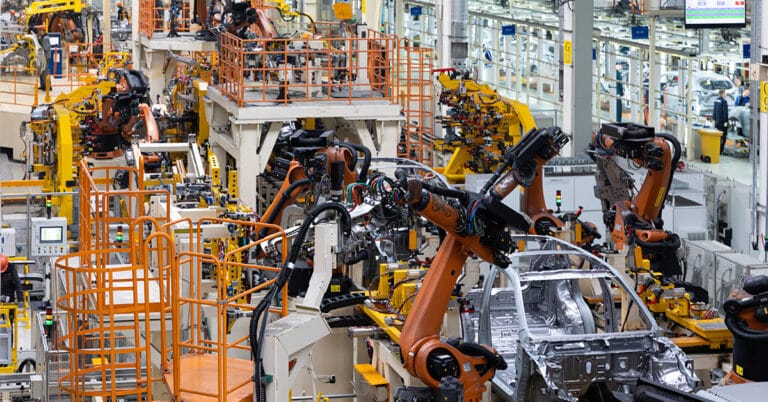Manufacturing execution systems (MES) and enterprise resource planning (ERP) tools both play critical roles in production line performance. While these solutions are useful in isolation, they’re far more effective when data from both is integrated into a unified environment.
With insights from both systems, businesses can streamline operations such as machinery monitoring, maintenance, and cycle time, boost productivity, and create a culture of data-driven manufacturing.
While MES/ERP integration offers both immediate and long-term benefits, several challenges are common during the process. First is data formatting. If production data formats are different in ERP than in MES systems, companies need to identify and implement a common standard. Next is redundancy. Enterprise resource planning and manufacturing execution systems often handle similar data sets, which can lead to unintended duplication and wasted time. Finally, businesses must ensure that access to combined MES system and ERP system frameworks is consistent with user roles and responsibilities.
In this piece, we’ll break down the differences between MES and ERP tools, explore the importance of ERP/MES integration, offer best practices for this process, and highlight the benefits of successful ERP and MES integration.
Understanding MES and ERP systems: key differences and functions
MES and ERP systems are complementary. They play interconnected but independent roles in manufacturing operations — and both are required to ensure smooth operations.
What is an ERP? Enterprise resource planning (ERP) systems offer visibility into processes across multiple business departments. Common ERP functions include:
- Strategic business management
- Finance tracking and oversight
- Materials procurement
- Inventory management
- Resource allocation
- Predictive maintenance
- High-level operational visibility
What is an MES? Manufacturing execution systems (MES) provide real-time monitoring and control of production operations. MES tools provide:
- Per-machine visibility
- Detailed shop-floor data
- Quality control
- Work-in-progress tracking
- Failure alerts
Both ERP and MES are essential for comprehensive process visibility. MES provides detailed insights into production line performance, helps identify necessary repairs and pinpoint root causes. On the other hand, ERP contextualizes manufacturing processes within the broader business framework and offers a high-level overview of maintenance needs.
The importance of MES and ERP data integration
More processes mean more data, and more data means more opportunities for improvement — if companies can effectively capture, curate, and analyze this data. Real-time data mapping between MES and ERP systems enables companies to act on relevant information and ensure consistency across operational departments such as production, maintenance, inventory, finance, and supply chain.
For example, if an MES tool reports that maintenance is required for a specialized piece of machinery, it can report this data to ERP tools. These tools then notify the finance department of the spending requirement and ask supply chain teams to order new parts.
There are several ways that MES and ERP integration can positively impact a company’s bottom line, including:
- Streamlined manufacturing processes: Efficient production lines depend on interconnected operations. Integrating MES and ERP systems ensures process consistency from the shop floor to financial reporting, which in turn improves visibility and reduces friction. The result? Streamlined processes that are accurate and observable.
- Enhanced production scheduling: Consistent cycle times underpin both production quality control and expected quantity outputs. MES and ERP software integration empowers more accurate production scheduling based on resource usage, market demand, and supply availability to minimize cycle time variation.
- Increased responsiveness to demand changes: Demand changes impact output requirements and machine uptime. By applying ERP data to MES processes, manufacturers are better prepared to anticipate these changes and prepare production lines for increased output.
- Improved resource allocation: Material availability, machine usage, and maintenance needs all play a role in resource allocation. Using an MES alone, businesses can keep production lines up and running. By incorporating ERP, companies can adjust resource allocation based on market trends, supply availability, and expected machine lifecycles.
Best practices for effective MES and ERP integration
Integration of MES and ERP software can be complicated and time-consuming, especially in the case of legacy or purpose-built solutions. While it’s impossible to eliminate every roadblock, six best practices can streamline this process.
- Conduct a complete needs assessment. To get where you’re going, you need to know where you are. Before starting any integration project, carry out a complete evaluation of current processes and pain points. This helps teams identify gaps in existing knowledge and prioritize areas for improvement.
- Define clear objectives. Successful integration relies on clear objectives. What processes do companies want to improve? What metrics measure this success, and what happens when initial goals are met? By defining objectives up-front, enterprises can create a roadmap for effective integration.
- Select compatible software solutions. The right software and the right providers can make all the difference in MES/ERP integration. Software solutions should include both prescriptive and predictive analytics for manufacturing, while providers should understand the unique needs of manufacturing businesses such as proactive maintenance, transparent operations, and inventory management.
- Ensure robust data governance. Data from both MES and ERP systems must be tracked, managed, and securely stored. Accomplishing this goal requires robust data governance that includes access permissions, proactive security controls, and regular auditing to ensure data due diligence.
- Implement integration gradually. ERP and MES systems use similar data but different processes. They have similar goals but leverage data in different ways. Gradual integration with testing at each significant milestone helps minimize conflict with PLM systems and other tools.
- Train teams on new workflows. Even the best systems won’t deliver value if employees don’t use them. C-suite leaders and technology teams need to provide complete training on new workflows and tools, along with the chance for staff to test these tools before they go live.
Benefits and ROI of successful MES and ERP integration
The successful integration of MES software and ERP tools offers several line-of-business benefits. Examples include:
- Increased operation efficiency and productivity: Combined MES/ERP processes let companies identify potential bottlenecks — such as machine performance issues or supply chain challenges — and address these issues in real time.
- Reduced inventory holding costs: Increased supply chain and customer demand visibility helps align production needs with on-site storage volumes. The result is more consistent inventory management that reduces total costs.
- Enhanced decision-making: Access to a broader range of data sources significantly improves decision-making. Equipped with supply, demand, production, and maintenance data, companies are better prepared to make better business decisions that benefit the bottom line.
- Improved agility: Market changes and disruptions are inevitable but often unexpected. Complete production data visibility lets teams react quickly to minimize operational disruptions.
- Greater transparency: Transparency drives action. By providing more data about production line processes, component availability, and logistics timelines, manufacturing workflows can be established that are both resilient and reliable.
When it comes to ROI, gross profit is the biggest advantage of integration. With production processes optimized, companies can reduce waste and eliminate unnecessary downtime.
Sharing the work: The strategic value of MES/ERP integration
Integrating MES/ERP systems delivers improved operational efficiency, increased visibility, and reduced production costs. However, to maximize the benefits of this integration, an in-depth, incremental approach is essential. This approach combines the front-line advantages of MES with the high-level visibility of ERP to deliver day-to-day benefits and drive long-term business strategy.
Make the most of your move to MES/ERP with industrial technology solutions from ATS. Let’s talk.

